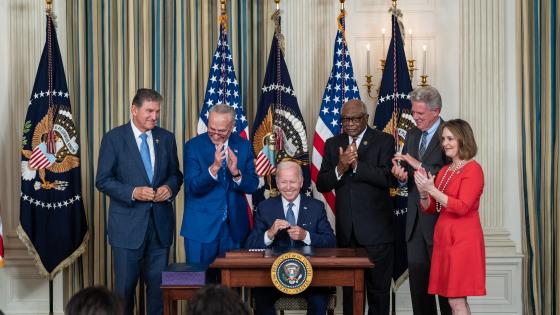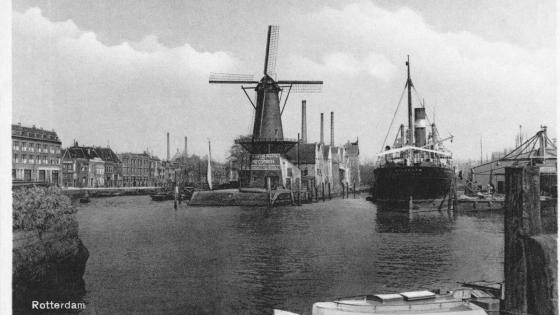In 2011 the world economy has been buffeted by a number of developments that were not foreseen at the time of the Seoul G20 Summit. Growing evidence of a stalled US economic recovery – coupled with the consequences of the Japanese earthquake in early 2011 and stubbornly-high inflation rates in emerging markets leading their governments to slow down growth – have resulted in many forecasters lowering their expectations about global economic growth this year.
These unanticipated, adverse macroeconomic developments now coincide with election cycles in a number of jurisdictions, increasing the risk that some leaders will court short-term popularity by resorting to protectionism. Moreover, now that many governments are cutting their budgets and that interest rates cannot fall much further in many countries, restricting foreign competition is one of the few tools available to policymakers when responding to pleas from domestic firms and trade unions. The sooner global economic growth recovers its previous pace the better, one welcome side effect would be to take some wind out of protectionist sails.
Plenty of evidence is presented in the 9th GTA Report to show that the pick-up in protectionism since the Seoul G20 summit coincides with the deterioration in economic sentiment. Moreover, the information that has come to light since November 2010 calls into question the more rosy assessments of protectionist dynamics in 2010. It now seems that the only third quarter of 2010 saw a dip in the resort to protectionism, otherwise the 2010 data are on track to be as bad as the latter half of 2009 in terms of closing borders to trade. The optimism of many observers, which I shared, about falling protectionism in 2010 now seems misplaced.
The message to policymakers is clear. Policymakers – in particular from the larger G20 countries – must renew their vigilance against protectionism. Otherwise a "people in glass houses" dynamic will reassert itself, whereby governments won't criticise others that close borders to commerce precisely because they know their own protectionist acts will come under scrutiny. The global trading system does not need another bout of collective non-compliance that it suffered during 2009.
Protectionism uncovered since the Seoul G20 Summit
Since the last GTA report in November 2010, the GTA team has evaluated a substantial amount of information on government measures that might affect foreign commercial interests. A total of 463 new entries were added to the GTA's online database (accessible and downloadable at www.globaltradealert.org), bringing the total number of measures in the database to 1,802. Some of this new information refers to government measures implemented or announced after the Seoul summit, some to before that summit. As argued below, the latter information is sufficient to call into question the prior, relatively positive interpretation of protectionist dynamics in 2010.
Since November 2010 just under 200 (194 in fact) protectionist measures have been implemented1. G20 governments were responsible for 80% – or 155 – of the protectionist measures taken since the Seoul summit, a percentage much higher than in previous years. Moreover, the four BRIC countries are responsible for implementing one-third of protectionism worldwide. A small number of governments bear a large share of the responsibility for restricting international commerce. The number of market-opening measures implemented since the Seoul summit (88) is less than half the number of market-closing ones. Some of the most prominent recent commerce-distorting measures are described in Box 1.
|
Box 1. Selected trade-distorting measures with systemic impact implemented since the Seoul G20 ministerial meeting
1. Rather than allow the importation of food through any seaport, Indonesia has restricted such imports to a selected number of seaports. This measure will last for all of 2011 and 2012.
2. Indonesia has imposed non-automatic licensing requirements on the imports of electronic goods and household appliances, footwear, and food and beverages, effective 1 January 2011.
3. In an obscure constitutional change, permitted under the latest EU treaty change, from 1 March 2011 the European Commission has changed its rules on the administration of antidumping and countervailing rules to make their application even easier.
4. On the first quarter of 2011, in a series of announcements, the Chinese government has introduced a "national security" review system of mergers and acquisitions of local companies by foreign counterparts.
5. In May 2011 the Korea Eximbank revealed a plan to promote 50 Korean firms that export green products. This plan involves offering 40 trillion won ($37 billion) of financial support through 2015.6. The European Commission has announced in May 2011 that, as of 1 January 2014, it will withdraw its system of preferential tariffs for less poor developing countries. For those products for which the EU does not have zero tariffs bound in their WTO tariff schedules this may involve an increase in the tariffs faced by the soon-to-be-excluded trading partners.
|
So far the GTA team has found evidence of 84 protectionist measures in the first quarter of 2011, which compares to the 85 such measures found in the last quarter of 2010. Fifty protectionist measures were implemented in the second quarter of 2011. If prior GTA experience is anything to go by, the quarterly rates of protectionism for will be revised upward substantially and could easily breach the 100-125 range last observed when protectionism worried policymakers in 2009. Put bluntly, those policymakers that were worried in 2009 ought to be worried now – recent protectionism is on the same trajectory as that witnessed in 2009. The resolve against protectionism appears to have weakened just at the time when global economic prospects have worsened.
The commercial interests of several nations have been particularly hit by foreign protectionism since November 2010. Chinese commercial interests have been harmed 91 times; that is, every other protectionist measure implemented since the Seoul G20 summit has harmed Chinese interests. Taken together the BRICs’ commercial interests were harmed 116 times. Germany, with its large export sector, saw its interests harmed 54 times. American commercial interests were harmed 61 times as well, implying that 30% of measures implemented since the Seoul G20 summit harmed an American exporter, investor, migrant worker, or owner of intellectual property rights.
The world trading system is now almost certainly less open than it was at the time of the last G20 summit in Seoul. Yet, protectionism continues to slide down the work programme of the G20 countries in the run-up to their next summit in Cannes, France, in November 2011.
A revised perspective on protectionism since 2009
Important features of protectionism have changed since the global economic crisis began. Arguably, some of the available evidence is weaker than others (for more evidence see Chapter 3 of the Report for a fuller discussion). The claim, for example, that the number of protectionist measures is now falling calendar year by calendar year could very plausibly be a function of reporting lags leading to lower totals being observed in more recent calendar years.
For example, by some measures of media reporting, fears that protectionism might pose a systemic threat to the open world trading system were at their peak in the first quarter of 2009. Such are the difficulties in assembling the relevant information that the Global Trade Alert team's current estimate of the resort to protectionism in that quarter is now double the team's best estimate in the third quarter of 2009 (see Figure 1 which plots the number of documented protectionst measures against the dates of publication of the second through ninth GTA reports).
Figure 1. Upward revisions in the number of protectionist measures implemented in Q1 2009
As the sequence of Global Trade Alert reports have shown, estimates of the number of protectionist measures imposed in 2009 and 2010 have had to be revised upwards repeatedly and, quite often, markedly. Instant assessments based solely on the most recently available data on policy stance are almost certain to understate the scale of protectionism – and policymaking processes need to take this understatement into account.
The fact that so much information about protectionist state measures does not become public immediately upon the implementation of those measures implies that sustained information collection on policy stance is needed. Furthermore, reports on protectionism and associated trade-policy developments should present updates of earlier estimates of the frequency of discriminatory policy interventions, much in the same way that government statisticians regularly revise employment, output, and inflation data.
After the recent update of the GTA database, new quarterly totals of the number of protectionist measures implemented were calculated. These totals were plotted against those found in the last GTA report, published in November 2010. Figure 2 shows a pronounced upward revision in the amount of protectionism implemented in 2010. Only Q3 2010 saw a pronounced fall in protectionism, implying that much commentary – including the GTA's last report--put too much weight on this quarter's good news. Once it became clear that economic conditions in late 2010 were not as rosy as expected in the middle of that year then governments returned to imposing protectionist measures at the rate seen in the first quarter of 2010.
Figure 2. Protectionism dipped in Q3 2010 and then recovered
Note: In Figure 2. a harmful measure is taken to be one which has been implemented since November 2008 and is almost certainly discriminatory (coded red) or likely to be discriminatory (coded amber).
A cautious interpretation of the quarterly totals reported above is that the global trading system is not out of the protectionist woods. A fall in the rate at which governments are closing borders to commerce is a lot less to celebrate than a fall in the total number of outstanding measures that impede global commerce.
The last update has also altered the ranking of countries according to harm inflicted on trading partners (Table 1). In terms of the number of almost certainly discriminatory measures implemented, the UK moves up from the 7th to 4th position. Also, France and China join the top 10 offenders on this criterion. In terms of tariff lines (products affected) taken together the EU27 has imposed measures on 549 tariff lines (out of a total of 1,214), up from 467 in November 2010. Likewise, Argentina's protectionist measures now affect 413 product categories, one-third of the total, up from 396 product groups. China now enters the top 10 nations in terms of sectors affected by protectionism. In terms of trading partners harmed, the EU27 swaps its second place spot for Argentina's top slot.
Table 1. Which countries have inflicted the most harm? Certain emerging markets and European nations
|
Rank
|
|
|
Ranked by number of (almost certainly) discriminatory measures imposed
|
Ranked by the number of tariff lines (product categories) affected by (almost certainly) discriminatory measures
|
Ranked by the number of sectors affected by (almost certainly) discriminatory measures
|
Ranked by the number of trading partners affected by (almost certainly) discriminatory measures
|
|
1.
|
EU27 (227)
|
Vietnam (927)
|
Algeria (62)
|
EU27 (180)
|
|
2.
|
Russian Federation (105)
|
Venezuela (785)
|
EU27 (58)
|
Argentina (175)
|
|
3.
|
Argentina (88)
|
Kazakhstan (729)
|
Nigeria (45)
|
China (172)
|
|
4.
|
UK (53)
|
Nigeria (599)
|
Kazakhstan (43)
|
Germany (161)
|
|
5.
|
Germany (52)
|
EU27 (549)
|
Germany (42)
US(42)
|
UK (154)
|
|
6.
|
India (50)
|
Algeria (476)
|
Belgium (153)
Finland (153)
India (153)
|
|
7.
|
Brazil (44)
France (44)
|
Russian Federation (438)
|
China (41)
|
|
8.
|
Argentina (413)
|
Indonesia (40)
|
|
9.
|
China (42)
Italy (42)
|
Indonesia (387)
|
Russian Federation (39)
|
Indonesia (151)
|
|
10.
|
India (369)
|
Venezuela (38)
|
France (149)
|
Note: There is no single metric to evaluate harm. Different policy measures affect different numbers of products, economic sectors, and trading partners. GTA reports four measures of harm.
1 For these purposes a measure in the GTA database that is both implemented and categorised amber or red is considered protectionist.




